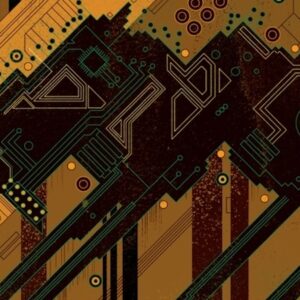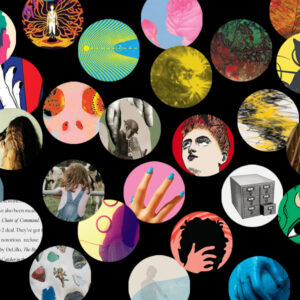
Francine Prose on Her Encounters with the Literary Strange
Francine Prose Reads Bolaño, Erpenbeck, Tutuola, and More
Some of our most exciting and memorable reading experiences occur when we discover a story or novel, essay, play or poem that seems to us so original, so unexpected, so apparently unaware of—or unconcerned by—past models, conventions and clichés, and yet so steadily faithful to a guiding principle all its own that, regardless of how much else we may have read, we think: This is something new. I didn’t know that a writer could do that.
In Roberto Bolaño’s novel, 2666, he devotes a dozen pages of the novel’s third section to a speech delivered by a character named Barry Seaman, a figure apparently based on the Black Panther leader and 60s activist Bobby Seale. Barry Seaman’s brilliant, rambling monologue covers subjects ranging from money to danger to food to stars (movie stars, star athletes, and the Milky Way) to the usefulness of the sun. (“From up close it’s hell, but from far away you’d have to be a vampire not to see how useful it is, how beautiful.”) He compares the value of a cigarette and a jar of strawberry jam in the various prisons in which he was incarcerated, and he tells the story of how pork chops saved his life.
Until I read Bolaño’s novel, I hadn’t realized that a writer could interrupt a narrative to include a lengthy sermon, though in fact I should have known: It’s been suggested that Barry Seaman’s lecture was partly inspired by Father Mapple’s sermon in Melville’s Moby-Dick, a novel Bolaño admired and which itself is structured in a way we might not have imagined. Who would have suspected what Melville has made us see: that a writer could alternate a vivid whaling yarn with long, digressive chapters on cetology, the scientific study of whales; that these lessons would teach us everything that was known at the time about whales; and that this information would only deepen the mystery of the white whale that Captain Ahab is chasing.
Until I read Jenny Erpenbeck’s novel, End of Days, I didn’t know that a book could begin with something that happened and then devote the rest of the book to what might have happened, a gamut of unrealized possibilities that range over much of modern European history. Before I became a fan of the work of Ivy Compton-Burnett it had never crossed my mind that one could write 20 novels that all feature (that indeed focus on) a seemingly proper British family chatting or quarreling around a breakfast or dinner table.
Until I read Amos Tutuola’s My Life in the Bush of Ghosts, I didn’t know you could leap over 20 years without telling the reader about it, or decide to bring the wandering home without a journey—and just because you want to.
I’m not sure that anyone can learn to be original. But if that possibility flickers, ever so dimly, within us, it can be fanned into flame when we witness the skill and grace and nerve with which a writer has broken new ground. Even if we have no desire to write, every encounter with literary uniqueness is a reminder of human uniqueness. Reading something that seems new to us can help us see the world in new ways. I am always grateful for anything that makes me less certain, less convinced, less rigid in my judgments.
Reading something that seems new to us can help us see the world in new ways.
Over time, the strange books I’m drawn to are less likely to promise (or threaten) to test my patience or my attention span. I want the same things from strange books that I want from any book: the pleasures of language, of character, plot, expression, invention, imagination, observation.
*
In the Fall of 2010, and again in 2016, I taught an undergraduate literature class at Bard College that I called Strange Books and the Human Condition. I added the phrase “the Human Condition” so that I could cross-list the course with the Human Rights department, which tends to attract some of the college’s most interesting students. “And the human condition” might otherwise seem redundant, since it could be tacked on to any literature course—Icelandic Epics and the Human Condition, Romantic Poetry and the Human Condition. It is rare that literature doesn’t tell us something about the human condition, besides which the human condition is one of those phrases which, if you repeat it often enough, dissolves into senseless babble.
Strange was the point, not that I wanted to spend the semester defining what and my students I meant by strange. What I had in mind was a combination of qualities and virtues: books that seemed original, eccentric, unusual, brilliant. Odd. To paraphrase Supreme Court Justice Potter Stewart’s famous ruling on pornography: You know strangeness when you see it. I would have included Kafka’s Metamorphosis, a foundational strange book, but I knew that most of my students had read it in the college’s first-year seminar.
In compiling the list, I looked for books that few people would think of as “experimental,” but which even fewer would classify as “conventional.” I joked that I was choosing books by authors who were either institutionalized or who would have been, had they lived at another time.
But that wasn’t true. These writers were not all outsiders, even the ones who were obliged to withdraw, periodically or permanently, from the world. Some were as strange as (or stranger than) their books: harmless, gifted, peculiar. My personal pantheon of strange writers comforts me though I’m not sure why it should. Many of them suffered greatly but left us extraordinary evidence of what they thought and endured, imagined and created.
Is it a coincidence that so many of them didn’t have “happy lives”?
Robert Walser, whose novel Jakob van Gunten we read, spent time in a mental hospital, in Switzerland, the kind of place that Walser called, in one story,” a sanatorium for people who were mentally not altogether at their best.” When a visiting friend asked Walser if he was getting any writing done in the asylum, he replied, “I am not here to write. I am here to be a mental patient”—a statement that I have always wanted to have embroidered on a sampler that could hang over my desk. In fact, he was writing poetic texts in microscript, a minuscule orthography that was thought to be a secret code but which was later discovered to have been a variant of medieval Swabian. These texts have been collected in a handsomely produced book entitled Microscripts, translated by Susan Bernofsky and illustrated with facsimile reproductions of the obsessively miniaturized originals.
Jane Bowles, whose novel, Two Serious Ladies we read in the first class, and whose story, “Camp Cataract,” we studied in its second iteration, died in a convent/clinic in Malaga; her confinement was the result of a series of strokes, though she seems to have been one of those fantastic birds of paradise who couldn’t have lived an ordinary life or held down a job. Nikolai Gogol and Heinrich von Kleist both seem to have been troubled. Kleist, the German Romantic genius, spent time in a clinic in Würzburg, “for a removal of an impediment to marriage,” though it is unclear whether his problem was physical or psychological. He ended his life in the most famous double suicide in literary history.
A Jew in Nazi-occupied Poland, Bruno Schulz—we read his Street of Crocodiles—would likely have been incarcerated, or worse, had he not been shot on the street by an SS officer with a grudge against another officer who was Schulz’s patron. Schulz, also a visual artist, decorated the nursery of his patron’s children with murals populated by his anxious, tormented, erotic Expressionist figures, highly unsuitable for children.
I never meant to stage a literary freak show, parading deranged writers in front of my horrified students.
Other writers we read led something closer to a so-called “normal life.” Henry Green (we read his novel, Nothing), was the son of an industrialist. He managed his family’s beer bottling plant, became chairman of the British Chemical Plant Manufacturers, and worked for the commercial storage supplier, H. Pontifex and Sons. But Green also had his quirks; a serial and (some might say) compulsive adulterer, he refused, all his life, to have his picture taken, except from the back. Felisberto Hernandez (“The Daisy Dolls”) made his living as a pianist, a “musical illustrator,” accompanying silent films throughout Uruguay and Argentina. Married four times, unable to leave his mother, Felisberto believed that the souls of thin people are reincarnated only once, while those of the overweight divide themselves among several newborns. He compared writing stories to helping a plant “growing in a corner of myself.”
Patterns emerged. Many of these authors were loners and eccentrics. Several were openly or secretly gay at times when homosexuality was, in their cultures, a sin. Others had unclear, taboo or nonexistent romantic terrors and desires. Several succumbed to intense religious obsessions. Today some might be seen as “on the spectrum.” Invited for a brief visit to the London home of his friend and admirer, Charles Dickens, Hans Christian Andersen stayed five weeks. Dickens never spoke to him again.
Many learned not to expect approval or understanding. A review of Heinrich von Kleist’s Marquise of O (1808)—“Even to summarize the plot is to banish it from polite circles”—sounds like the notice that Jane Bowles’s first and last novel got in the New York Times Book Review in 1943. “To attempt to unravel the plot of Two Serious Ladies would be to risk, I am sure, one’s own sanity.”
There were happier correspondences, threads that tie these writers together. Robert Walser was not only (like Kafka) a fan of Heinrich von Kleist’s but he wrote an extraordinary story entitled “Kleist in Thun.” Reading the end of the story feels, to me, like touching a burning hot surface: painful yet exalting until the pain sets in for real.
In Walser’s story, Kleist has come to the town of Thun to write. The place is marvelously scenic—and consequently distracting. Unable to write, Kleist falls ill. And this is how Walser imagine Kleist’s state of mind:
“Weeks pass. Kleist has destroyed one work, two works, three works. He wants the highest mastery, good good. What’s that? Not sure? Tear it up. Something new, wilder, more beautiful… The good fortune to be a sensibly balanced man with simple feelings he sees burst into fragments, crash and rattle like boulders collapsing down the landslip of his life… He wants to abandon himself to the entire catastrophe of being a poet; the best thing is for me to be destroyed as quickly as possible.”
*
One reason I know so much about these writers’ lives is because in my 2010 Strange Books course, I asked students to take turns researching, writing, and reading aloud mini-biographies of the authors we were reading that week. Sometimes biography is just a gossipy footnote, but in this case it seemed important, though I chose not to do this the second time I taught the course, maybe because students so often focused on the most grisly and lurid episodes in their subjects’ lives.
I never meant to stage a literary freak show, parading deranged writers in front of my horrified students. I did say that few writers on our list could have functioned in the culture that, today, sees literature as a profession for which you prepare like any other: going to the right school, meeting the right people. The right internships, finding the right agent, orchestrating a career just as in law or finance, though writing may seem more glamorous though the average wage per hour is substantially lower. I reminded my students that writing is a calling and not a job, a vocation and not a business, a compulsion and not a hobby. It has to be worth the time and trouble, the work, the obsessive commitment to helping that plant to grow in the corner of the self, the plant that survives for centuries and still seems beautiful—and strange.
Francine Prose
Francine Prose is the author of twenty-two works of fiction including the highly acclaimed The Vixen; Mister Monkey; the New York Times bestseller Lovers at the Chameleon Club, Paris 1932; A Changed Man, which won the Dayton Literary Peace Prize; and Blue Angel, which was a finalist for the National Book Award. Her works of nonfiction include the highly praised Anne Frank: The Book, The Life, The Afterlife, and the New York Times bestseller Reading Like a Writer, which has become a classic. The recipient of numerous grants and honors, including a Guggenheim and a Fulbright, a Director’s Fellow at the Center for Scholars and Writers at the New York Public Library, Prose is a former president of PEN American Center, and a member of the American Academy of Arts and Letters and the American Academy of Arts and Sciences. She is a Distinguished Writer in Residence at Bard College.












